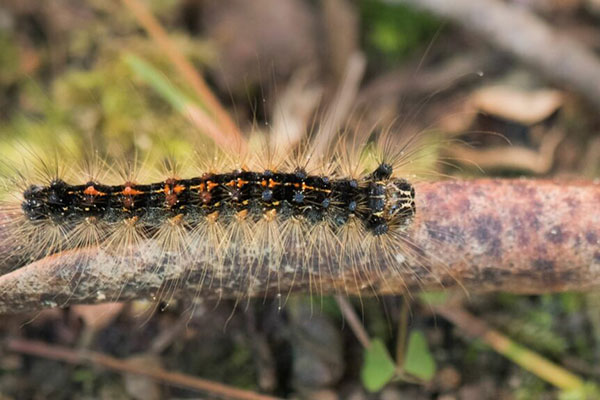Your cart is currently empty!

15 Mar How do Gypsy Moths Hurt your Trees, and How Can you Prevent Them?
Do you have a garden but struggle with harmful pests? Maybe you’ve planted new trees and shrubs but they keep getting fed on. As the summer is approaching, gypsy moths will soon return to cause problems and harm your plants. But don’t fret! This blog provides plenty of information and tips about Gypsy Moths to help you prevent and combat infestations.
Gypsy Moths (Lymantria Dispar) are a harmful invasive species that weaken and kill trees. The gypsy moth is found mainly in Ontario, Quebec and the Maritime provinces. These moths were accidentally introduced into Massachusetts in 1869 by a French naturalist trying to cross the European gypsy moth with North American silkworms. Gypsy moths usually appear between July and August, and it is vital to understand these pests and how to treat them in order to protect your trees.
How Do Gypsy Moths Damage Trees?
Gypsy moths are destructive pests, and their mature stage usually appears in late July or August. These invasive species are a huge concern because they weaken and destroy trees. They mainly damage trees by defoliating them, which means they consume all or almost all of the tree’s leaves. Without leaves, a tree loses most of its capability to photosynthesize, which means it cannot produce the resources it needs to survive. Defoliation also stresses a tree making it more susceptible to diseases and other pests; stressed trees may also be unable to withstand environmental problems, such as drought.
The larva or caterpillar is the damaging stage of the Gypsy Moth as the caterpillars eat the tree’s leaves in the spring. Despite their small size, they can consume tremendous amounts of leaf material. For example, Gypsy moth larvae can consume as much as one square foot of leaves per day. As a result, they produce a large amount of fecal (frass) material. When populations reach outbreak proportions, the caterpillars can completely defoliate host trees over a wide geographic area. Repeated defoliation over several years can have disastrous effects, often leading to tree stress and death.
Can A Tree Survive Gypsy Moth Infestation?
Defoliation is a widespread loss of leaves or stripping of leaves on a plant. There are many causes behind it, such as grazing animals like deer or rabbits, insect infestation, disease or chemical run off from herbicides. A healthy tree defoliated by the gypsy moth will normally grow back its leaves in the second half of the summer, after the gypsy moth caterpillars are gone, and will usually be able to survive two or three successive bouts of defoliation. After that, it is too weakened to stand up to other pests. It is usually these other pests or environmental problems– such as drought– that end up killing a tree that was weakened by Gypsy Moths.
Which Types Of Trees Do Gypsy Moths Attack?
These are a list of trees that Gypsy Moths attack:
- Oak
- Crabapple
- Linden
- Beech
- Willow
- Birch
- Sweetgum
- Serviceberry
- Hawthorn
Conifers are more prone to to death than evergreens trees (like pine, spruce, hemlock) because they don’t produce another flush of growth once defoliated. Conifers, like pine and spruce, are unable to produce new leaves/needles after defoliation as compared to deciduous trees. As a result, conifers can die after one severe defoliation by gypsy moths. Gypsy moth defoliation can also change the complexity of understory growth, thus resulting in an increased or decreased population of certain trees.
How To Get Rid Of Gypsy Moth Infestations From Trees?
In order to combat a Gypsy Moth infestation, first destroy egg masses by spraying them with a horticultural oil made for gypsy moth egg masses; sprays are available at lawn and garden centers or online. Use a knife or paint scraper to gently scrape all of the eggs into a jar. Eggs can then be killed by soaking them in soapy water for 2 days before discarding them in the trash. Don’t only scrape egg masses onto the ground or try to crush them with your shoe, as they will still be able to survive and hatch next spring.
If you’re already experiencing gypsy moth caterpillars around your lawn and garden, there is a safe and effective solution for eliminating them. Keep gypsy moths off your trees with The Environmental Factor’s V9 Tree Belt. The V9 Tree Belt is a safe and humane means of protecting your trees’ foliage against caterpillars. Simply wrap the V9 Tree Belt around the trunk of any possible host trees to prevent caterpillars from climbing up the tree to reach the foliage.
We hope that you found this article informative regarding Gypsy Moths. There are many products on our website to help with pests like these and can fix problems regarding gardens/lawns. Gypsy moths can harm trees in many different ways so stay safe and watch out for them in the summer!


